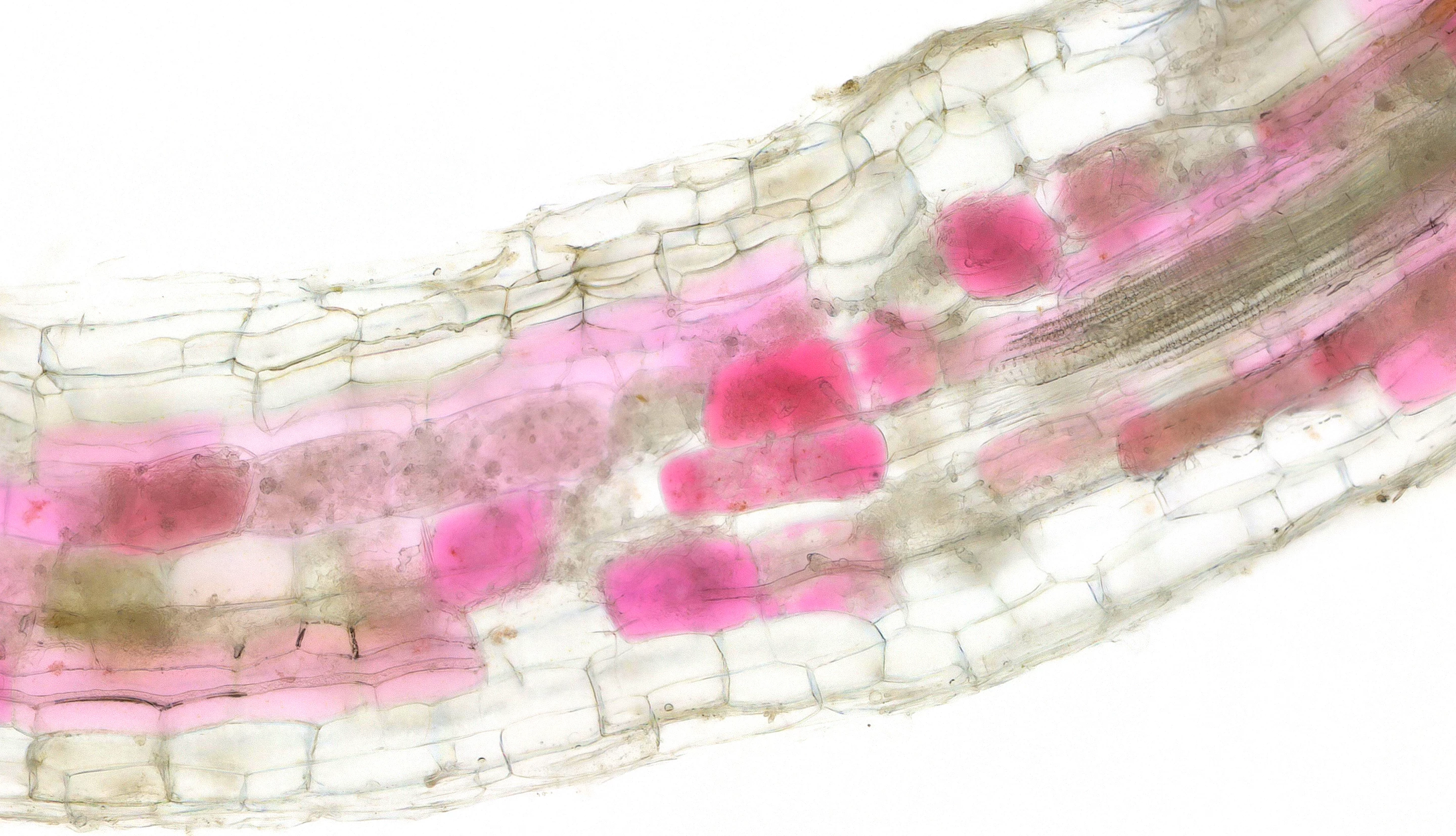While you might think that it's best to keep crops fungus-free, there are some fungi that actually help plants grow. In order to better observe that relationship, scientists have created plants with roots that turn red when infiltrated by beneficial fungi.
Arbuscular mycorrhiza fungi occur naturally in the soil, making their way into the roots of plants. They then form tree-like structures known as arbuscules which branch out of the roots and into the earth. This increases the surface area of the roots, allowing them to draw in more nutrients than would otherwise be possible.
Ordinarily, in order to study arbuscular mycorrhiza within roots, plants have to be pulled from the ground and killed. This means that scientists can't tell what would have happened with the plant and the fungus, past the point at which the plant was pulled.
Seeking a method of continuously observing the fungi in the roots of living plants, scientists at the University of Cambridge genetically engineered legume and tobacco plants that produce betalain pigments when arbuscular mycorrhiza enter their roots. Betalains are highly visible, giving beetroots their vivid red color.
By growing the plants in a thin transparent structure (not unlike an ant farm), the scientists were able to image their roots using a flatbed scanner. The researchers could then focus in on the red areas within the resulting images, easily seeing where and when the fungi were entering individual root cells and producing arbuscules.
"This is an exciting new tool to visualize this, and other, important plant processes," says Dr. Sam Brockington, joint senior author of a paper on the study. "Beetroot pigments are a distinctive color, so they’re very easy to see. They also have the advantage of being natural plant pigments, so they are well tolerated by plants."
It is hoped that by studying such plants and gaining a better understanding of the plant/fungi relationship, it will one day be possible to engineer crops that are better at extracting nutrients from the soil, thus requiring less fertilizer.
The paper was published this month in the journal PLOS Biology.
Source: University of Cambridge




